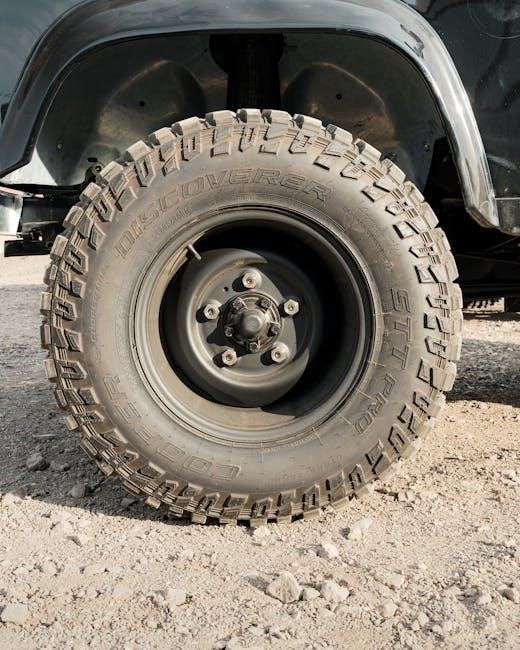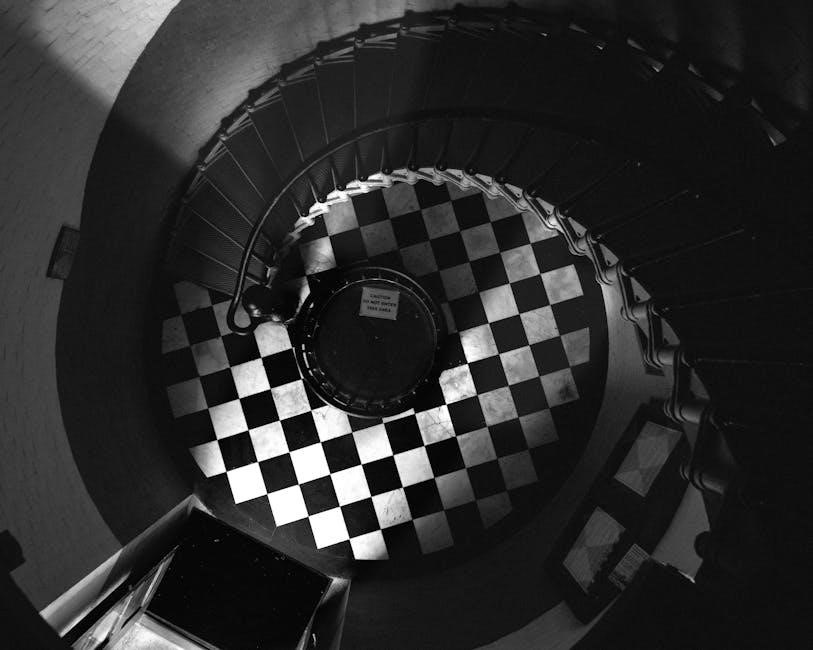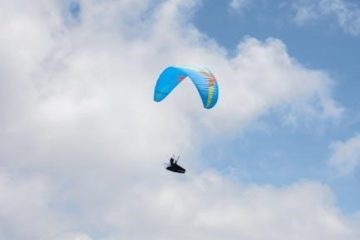Abstract
This projectile motion lab report investigates the principles of projectile motion and the effects of launch angle on the distance traveled by a projectile. By applying kinematic equations‚ the report outlines procedures to calculate the initial velocity and range of motion at various angles.
This experiment explores projectile motion‚ a fundamental physics concept describing the trajectory of objects launched into the air. Understanding projectile motion involves analyzing the effects of gravity and initial velocity on an object’s range‚ maximum height‚ and time of flight.
Objective

The primary objective of this experiment is to investigate and analyze the principles of projectile motion. This will be achieved by launching a projectile at varying angles and measuring its corresponding range. The collected data will then be used to determine the relationship between launch angle and range‚ and to identify the angle at which the projectile achieves maximum range.
Furthermore‚ the experiment aims to calculate the initial velocity of the projectile using kinematic equations and compare it with the measured values. By comparing the theoretical predictions with the experimental results‚ the accuracy of the kinematic equations in describing projectile motion will be evaluated.
Additionally‚ the experiment seeks to explore the effect of launch angle on other parameters such as the maximum height reached by the projectile and the total time of flight. By analyzing these parameters‚ a more comprehensive understanding of projectile motion will be achieved.
Finally‚ the experiment aims to identify and analyze the sources of error that may affect the accuracy of the results. By understanding these sources of error‚ the experimental design can be improved in future studies to minimize their impact.

Theoretical Background
Projectile motion is a fundamental concept in physics‚ describing the motion of an object launched into the air under the influence of gravity. Understanding projectile motion requires applying kinematic equations to analyze trajectory‚ velocity‚ and acceleration‚ considering both horizontal and vertical components.
Kinematic Equations
Kinematic equations are the mathematical tools used to analyze projectile motion‚ assuming negligible air resistance. These equations describe the relationship between displacement‚ velocity‚ acceleration‚ and time for an object in motion. In projectile motion‚ we often separate the motion into horizontal and vertical components‚ as gravity only affects the vertical component.
For constant acceleration‚ the primary kinematic equations are:
- v = v₀ + at (final velocity equals initial velocity plus acceleration times time)
- Δx = v₀t + (1/2)at² (displacement equals initial velocity times time plus one-half acceleration times time squared)
- v² = v₀² + 2aΔx (final velocity squared equals initial velocity squared plus two times acceleration times displacement)
In the horizontal direction‚ acceleration is typically zero (if air resistance is ignored)‚ resulting in constant velocity. In the vertical direction‚ acceleration is due to gravity (approximately 9.8 m/s²)‚ acting downwards. Using these equations‚ we can calculate the range‚ maximum height‚ and time of flight of a projectile given its initial velocity and launch angle. Understanding and applying these kinematic equations is crucial for predicting and analyzing projectile motion accurately.

Experimental Setup
The experimental setup for a projectile motion lab typically involves a projectile launcher‚ a projectile (e.g.‚ a ball)‚ a measuring tape to measure distance‚ and a protractor to measure launch angles. The launcher is used to project the object at different angles.
Materials
For conducting a projectile motion experiment‚ several key materials are essential to ensure accurate data collection and reliable results. These materials facilitate the launching‚ tracking‚ and measurement of projectile trajectories.
First and foremost‚ a projectile launcher is required. This device provides a consistent and controlled launch of the projectile‚ allowing for variations in launch angle and initial velocity. A projectile‚ typically a steel ball or a similar object with consistent mass and shape‚ is needed to be launched by the launcher.
To measure the range of the projectile‚ a measuring tape or meter stick is necessary. This tool allows for precise determination of the horizontal distance traveled by the projectile before impact. A protractor is used to accurately measure the launch angle of the projectile‚ ensuring that the angle can be adjusted and recorded with precision.
Carbon paper and a landing surface are utilized to mark the impact point of the projectile‚ enabling easy measurement of the range. A vertical stand or clamp may be used to maintain the stability and alignment of the projectile launcher.
Procedure
The procedure for a projectile motion experiment typically involves several key steps to ensure accurate data collection and analysis. The experiment begins with setting up the projectile launcher on a stable surface‚ ensuring it is properly aligned and secured using a vertical stand or clamp.
Next‚ the launch angle is set using a protractor‚ with common angles ranging from 30 to 70 degrees. The projectile‚ such as a steel ball‚ is loaded into the launcher. The launcher is then activated to launch the projectile‚ and the landing point is marked using carbon paper on a landing surface.
The horizontal distance traveled by the projectile (the range) is measured using a measuring tape or meter stick‚ and this measurement is recorded. This process is repeated multiple times for each launch angle to obtain an average range and reduce experimental error.
The initial velocity of the projectile is determined using photogates and computer software for timing‚ or through calculations based on kinematic equations. The collected data‚ including launch angles‚ ranges‚ and initial velocities‚ is then used to analyze the relationship between launch angle and range‚ and to compare experimental results with theoretical predictions.

Results and Discussion
The results and discussion section of a projectile motion lab report typically presents the collected data. It also includes an analysis of the relationship between launch angle and range. Comparisons with theoretical predictions are also discussed.
Effect of Launch Angle on Range
The projectile motion experiment explores the crucial relationship between the launch angle of a projectile and its resulting range. As the launch angle varies‚ the horizontal distance covered by the projectile changes significantly‚ showcasing the interplay between initial velocity components and gravitational effects.
Experimental results often demonstrate that the maximum range is typically achieved when the launch angle is approximately 45 degrees. This occurs because‚ at this angle‚ there is an optimal balance between the horizontal and vertical components of the initial velocity. A smaller launch angle favors horizontal motion‚ but a larger launch angle prioritizes vertical motion and air time.
The data gathered from launching projectiles at different angles helps to confirm this theoretical prediction. Discrepancies between theoretical calculations and experimental data may arise due to factors such as air resistance‚ inconsistencies in launch velocity‚ and measurement errors.
Analyzing the impact of launch angle on range provides valuable insight into the principles governing projectile motion. Understanding these effects is crucial in various applications‚ including sports‚ military science‚ and engineering. This understanding allows for optimizing launch parameters to achieve desired projectile trajectories.
Further investigations can explore the effects of launch angle in conjunction with other variables‚ such as initial velocity and projectile mass‚ to gain a more comprehensive understanding of projectile motion.
Comparison with Theoretical Predictions
This section delves into the crucial comparison between experimentally obtained data and theoretical predictions derived from kinematic equations. The theoretical range of a projectile can be calculated using the initial velocity‚ launch angle‚ and gravitational acceleration. By contrasting these predicted values with the measured ranges from the experiment‚ we can assess the accuracy and validity of the theoretical model.
Ideally‚ the experimental results should closely align with the theoretical predictions. However‚ discrepancies are expected due to various factors‚ including air resistance‚ measurement errors‚ and inconsistencies in the launching mechanism. Air resistance‚ in particular‚ can significantly affect the projectile’s trajectory‚ causing the actual range to fall short of the theoretical value.
To quantify the agreement between experimental and theoretical results‚ statistical analyses‚ such as calculating the percent difference or root mean square error‚ can be performed. These analyses provide insights into the magnitude and nature of the deviations. If the discrepancies are substantial‚ it may be necessary to refine the theoretical model or improve the experimental setup to minimize errors.
Furthermore‚ understanding the sources of error is crucial in interpreting the results. By carefully analyzing the experimental conditions and uncertainties‚ we can gain a deeper appreciation for the limitations of the theoretical model and the challenges of accurately predicting projectile motion in real-world scenarios.
In conclusion‚ this projectile motion experiment has provided valuable insights into the principles governing the trajectory of objects launched into the air. Through careful measurements and analysis‚ we have observed the relationship between launch angle‚ initial velocity‚ and range‚ confirming that the maximum range is achieved at an angle of approximately 45 degrees‚ aligning with theoretical predictions.
The comparison between experimental results and theoretical calculations revealed a generally good agreement‚ although some discrepancies were observed. These deviations can be attributed to factors such as air resistance‚ measurement errors‚ and limitations in the experimental setup. While the theoretical model provides a useful approximation of projectile motion‚ it is essential to acknowledge the influence of these real-world factors.
The findings of this experiment have practical implications in various fields‚ including sports‚ engineering‚ and military applications. Understanding the principles of projectile motion allows us to optimize the performance of athletes‚ design more efficient projectiles‚ and accurately predict the trajectory of objects in flight.
Further research could focus on investigating the effects of air resistance in greater detail‚ exploring different projectile shapes and sizes‚ and developing more sophisticated models to account for complex environmental conditions. By continuing to refine our understanding of projectile motion‚ we can unlock new possibilities and applications in diverse areas of science and technology.



0 Comments